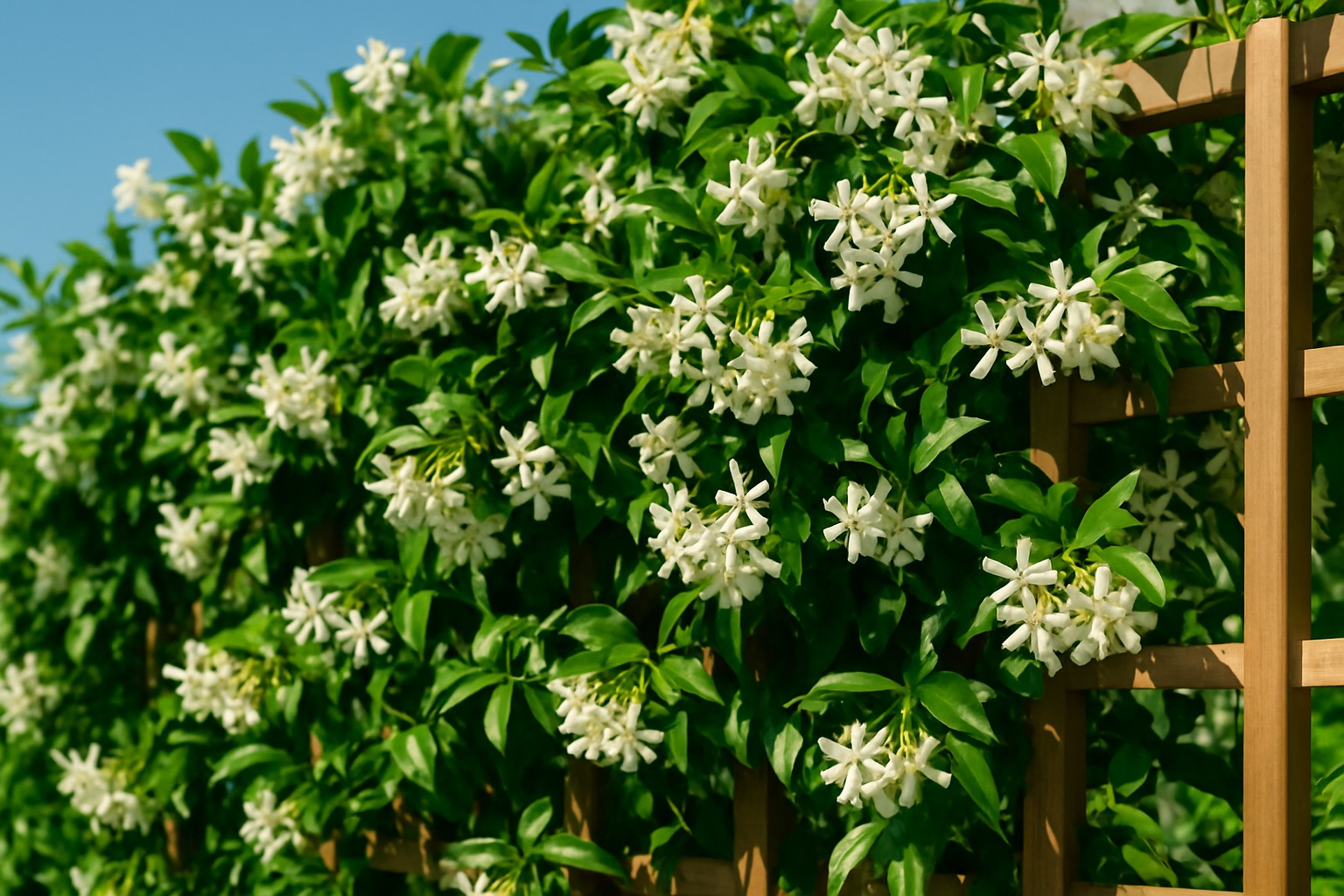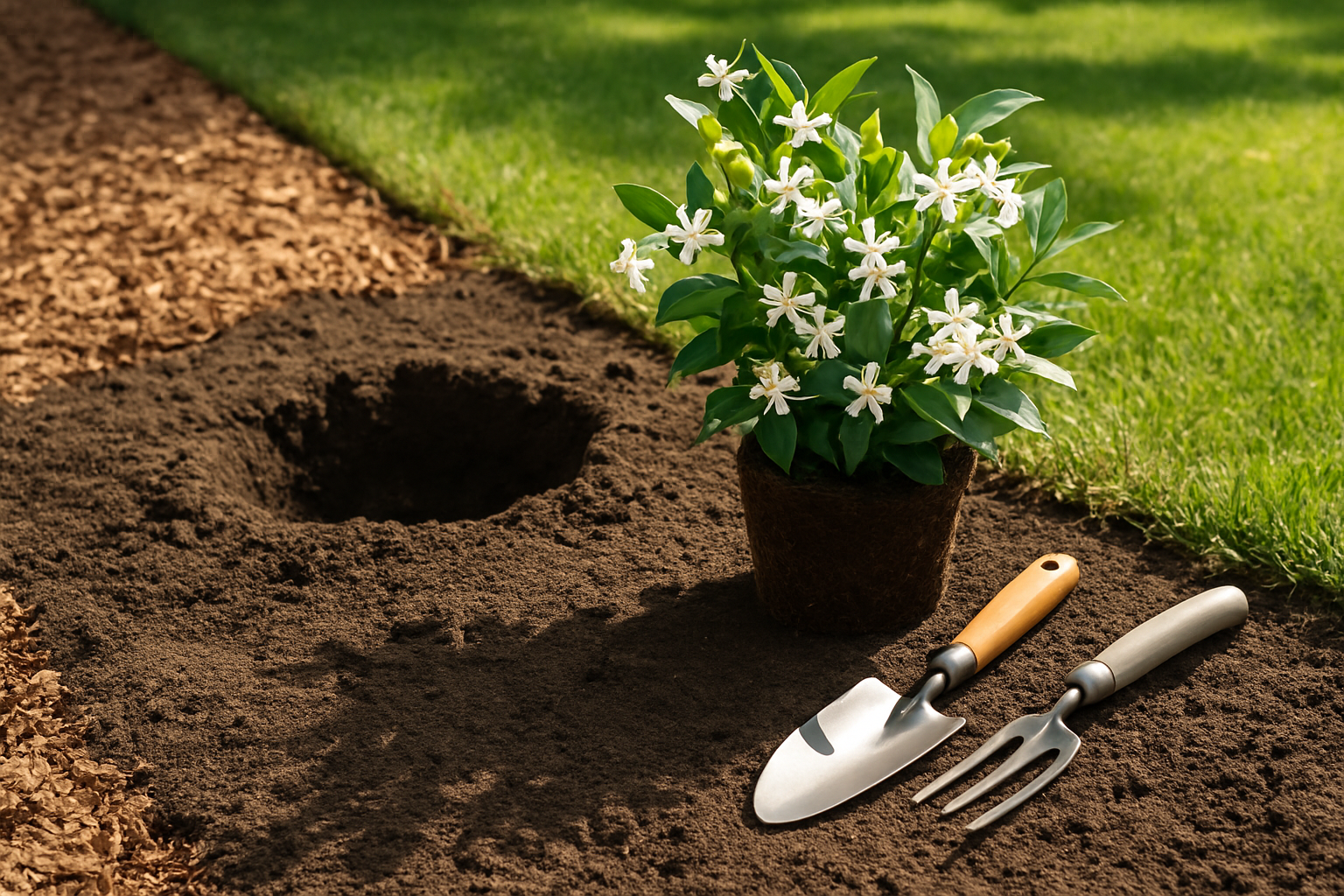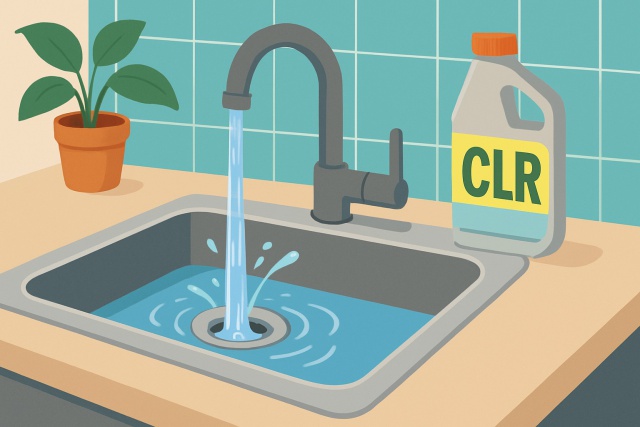How to Plant Confederate Jasmine for Year Round Blooms

Confederate jasmine is a truly stunning, fragrant evergreen vine that is prized for its lush green leaves and charming clusters of star-shaped white flowers. Knowing how to plant confederate jasmine is rewarding because it usually blooms for quite a long stretch, which means adding this vine to your garden often leads to a delightful scent and a steady splash of color all year round.
Getting to Know Confederate Jasmine Its Charming Traits and How It Spreads Its Green Magic
Confederate jasmine (Trachelospermum jasminoides) is a fast-growing evergreen vine from Asia. It flaunts glossy dark green leaves and sweet-smelling white flowers with five delicate petals. The vine usually puts on a show from spring well into fall. It thrives in warm climates, typically USDA zones 7-10, and prefers soil that drains nicely and stays evenly moist—not too wet or dry. Because it grows quickly and effortlessly blankets trellises, fences or walls, it’s often the go-to choice for privacy screens and adding a touch of charm. Beyond its good looks it stays green year-round.
Choosing the Best Spot and Getting Your Garden Ready (Because Every Great Garden Starts with a Solid Foundation)
Picking the right spot to plant is absolutely key if you want your Confederate jasmine to really thrive. This vine prefers full sun or some friendly partial shade, along with soil that drains well but still holds onto a bit of moisture—kind of a Goldilocks zone of dirt. Before you get your hands dirty, it is a good idea to loosen the soil and mix in some organic matter. This combination boosts fertility and improves drainage.
- Make sure the plant soaks up at least 4 to 6 hours of strong sunlight each day so it can show off its best blooms.
- Choose soil that leans toward acidic to neutral, around pH 6.0 to 7.0 because this helps the roots grow strong.
- Give the soil a quick check for drainage. If water stays too long, avoid spots that remain soggy.
- Find a cozy nook sheltered from drying winds. Your vine will thank you by looking less stressed.
- Don’t be stingy with space. Let the vine spread its wings about 6 to 10 feet when fully grown.
Step-by-Step Guide on How to Plant Confederate Jasmine (Because Your Garden Deserves a Bit of Southern Charm)
- Start by picking out a healthy Confederate jasmine plant or a semi-hardwood cutting from a nursery you trust. Giving it a solid head start really makes a difference.
- Dig a hole that is about twice as wide and just as deep as the root ball so the roots have plenty of room to stretch out.
- Mix your garden soil with some compost or well-rotted manure. This boost enriches the soil and helps it retain moisture better, which your plant will appreciate.
- Plant it so that the top of the root ball sits flush with the surrounding soil. This simple step can save you a lot of trouble by preventing stem rot.
- Backfill the hole gently while firming the soil around the roots as you go. Be careful to avoid air pockets since those can dry out your roots quickly. After planting, give the plant a good soak.
- Finally, spread a 2 to 3 inch layer of organic mulch around the base but make sure not to pile it up against the stem since that can cause problems. This helps keep the soil moist and stops those pesky weeds from growing.

Preparing the garden bed for planting Confederate jasmine with proper hole depth and soil amendments
Watering and Fertilizing to Keep Those Blooms Thriving
Keeping the soil evenly moist without drowning the poor Confederate jasmine is key this plant usually prefers regular but sensible watering.
- Water newly planted jasmine every 2 to 3 days until it’s settled in. Then give it a deep soak once a week during dry spells. Think of it as giving your plant a proper drink rather than a constant drip.
- Choose a balanced slow-release fertilizer like 10-10-10 and apply it in early spring and midsummer to keep growth steady.
- Make sure your fertilizer includes micronutrients like magnesium and iron. These keep leaves a healthy vibrant green that’ll make your neighbors a little jealous.
- Watch for yellowing leaves because they often signal nutrient shortages. If you spot this it’s time to tweak your feeding routine.
- Be cautious not to drown your jasmine by overwatering. Soil that’s too soggy can invite root rot faster than you’d expect. Yellow leaves and soft stems usually mean your plant has had too much water.
How to Prune and Train Confederate Jasmine for Healthy Growth and More Gorgeous Blooms
Regular pruning keeps growth in check and encourages the vine to branch out. It often results in a more generous display of flowers on Confederate jasmine. Training the vine onto trellises or fences helps maintain a sturdy framework and gives it the chance to soak up plenty of sunlight.
- Prune in late winter right before new growth begins to clear out any dead or overcrowded stems. Think of it as giving your plant a fresh start after its winter rest.
- Always use sharp, clean pruning shears and make neat cuts at the nodes. This careful touch encourages healthy new growth and keeps your plant looking its best.
- During summer, pinch back the growing tips to encourage the plant to develop bushier foliage and produce more flower clusters. It is like giving it a gentle reminder to become more lively.
- When training vines along supports, proceed slowly and carefully by loosely tying stems with soft twine. This keeps them secure without damaging the plant while guiding their growth in the right direction.
Frequent Issues and Tips for Fixing Them (Because We’ve All Been There)
Confederate jasmine is generally quite hardy but every now and then it might throw you a curveball with pests or diseases or a bit of environmental stress. Spotting these pesky problems early and acting quickly goes a long way in keeping your vine happy and blooming.
- Aphids and spider mites love to mess with your plants and often cause leaves to turn yellow or develop webbing. Luckily, a splash of insecticidal soap or neem oil usually does the trick.
- Powdery mildew shows up as a stubborn dusting of white powder on leaves. Boosting air circulation around your plants helps a lot. Applying fungicidal sprays when needed keeps things from getting out of hand.
- Making sure your soil has good drainage and avoiding sogginess is key when you overwater or your soil refuses to drain properly.
- Environmental stress like frost damage can turn leaves brown and crispy. Wrapping your plants in frost cloth during chilly spells protects them.
- Nutrient deficiencies show as discolored or oddly shaped leaves. Staying on top of a sensible fertilizing routine usually keeps these problems at bay.
Tips for Keeping Your Garden Blooming All Year with Seasonal Care and Maintenance That Really Works
Confederate jasmine often surprises you by blooming well past its usual flowering time, especially when you give it care that tunes in with the changing seasons. Knowing how to plant confederate jasmine is just the beginning; tweaking your watering and fertilizing routine throughout the year, keeping it snug from chilly spells, and giving it a bit of a trim to encourage more blooms are all great ways to keep your vine looking healthy and lively.
- Water a bit more frequently in spring and treat your plant to a balanced fertilizer that really encourages fresh growth and those lovely flowers to pop up. It’s like waking them up from a cozy winter nap.
- Keep the soil consistently moist during summer—think of it as giving your plant a steady drink on a hot day—and be sure to selectively snip off spent blooms. This little trick nudges new buds to form, keeping the show going.
- Ease off on the watering just a tad come fall and swap to a fertilizer lower in nitrogen but richer in phosphorus. This helps your plant focus on blooming rather than just leafy growth, setting the stage for next season’s beauty.
- Protect your green friend from the chill in winter by piling on a thick layer of mulch around the roots and draping exposed vines with frost cloth when temperatures drop. It’s like tucking them in for a cozy, frost-free sleep.




